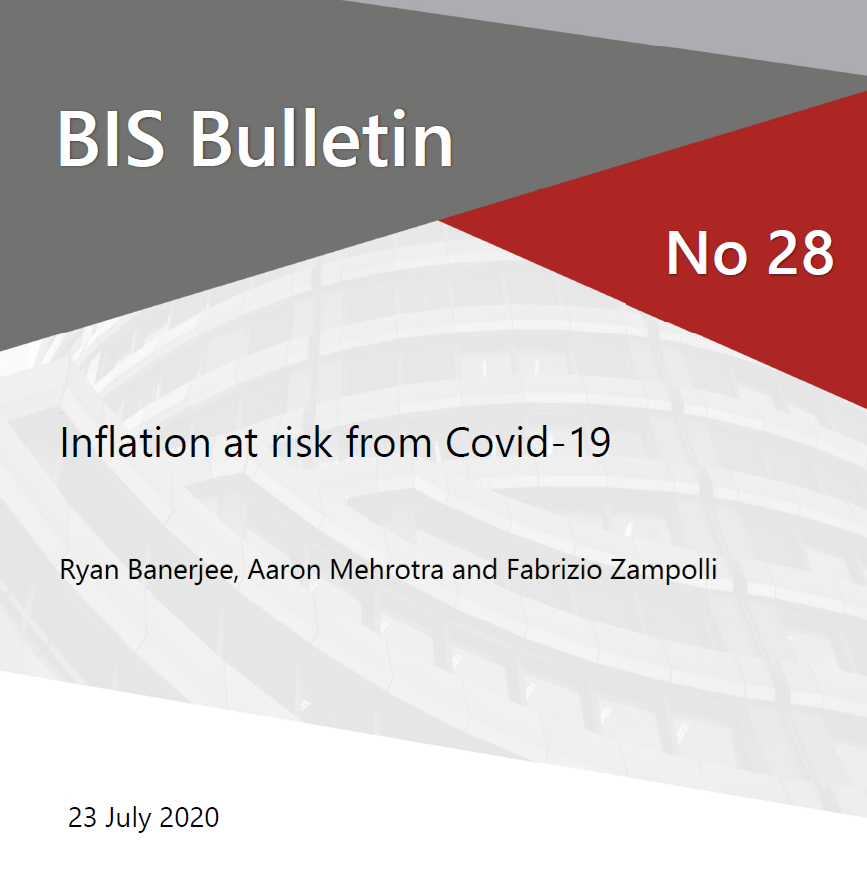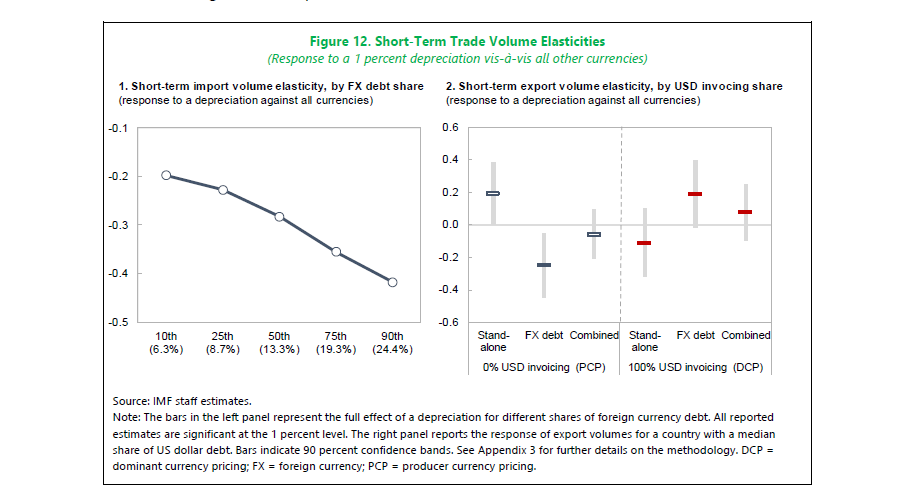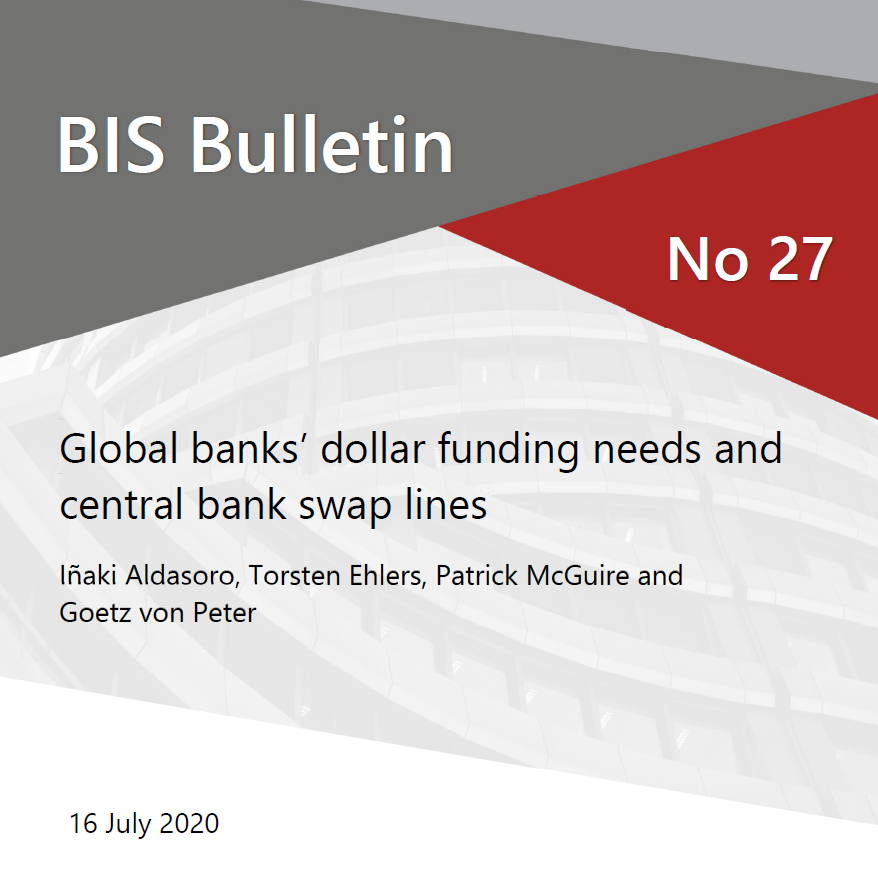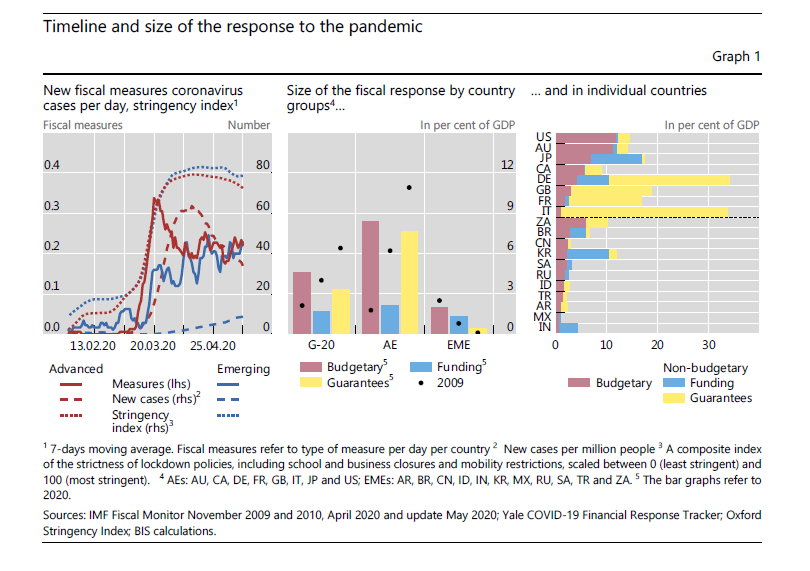
Happy to announce the launch of the BIS’s “Dreamcatcher” data visualisation tool with the latest BIS banking statistics:
bis.org/statistics/rpp…
A thread follows
bis.org/statistics/rpp…
A thread follows
https://twitter.com/bis_org/status/1352578962141151235
Dreamcatcher puts into one package the BIS’s cross-border banking statistics; or more accurately, it gathers the BIS’s locational banking statistics that breaks out the cross-border bank claims according to the residence principle
bis.org/statistics/sta…
bis.org/statistics/sta…

Hovering your cursor above the segment of the circle that represents a particular jurisdiction will bring up the full list of cross-border assets and liabilities of banks operating from there
bis.org/statistics/sta…
The example below is the United Kingdom
bis.org/statistics/sta…
The example below is the United Kingdom
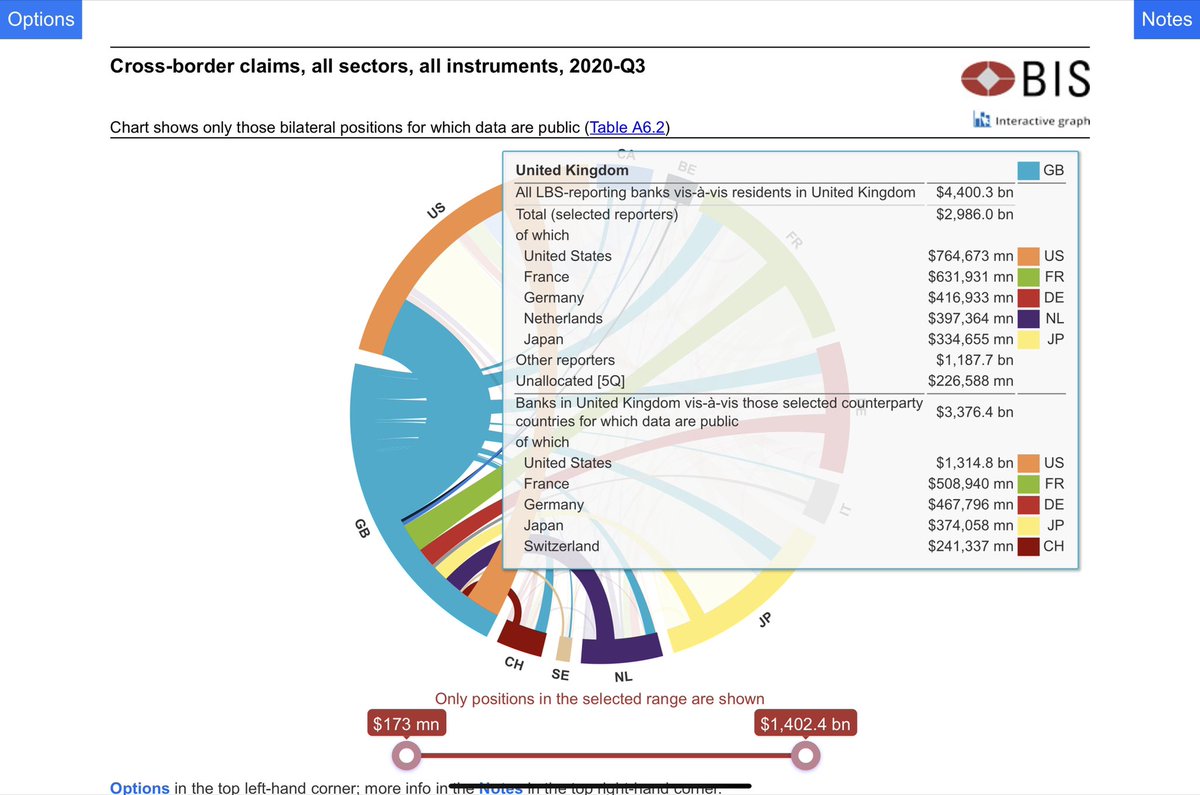
You can then explore each bilateral link by hovering the cursor over the bilateral link
Here is the example of UK-based banks’ claims on US resident borrowers
bis.org/statistics/sta…
Here is the example of UK-based banks’ claims on US resident borrowers
bis.org/statistics/sta…

The bilateral links are uni-directional in that we have a lending jurisdiction and a borrowing jurisdiction
This example below is the converse; it shows the claims of US-based banks on UK-resident borrowers
bis.org/statistics/sta…
This example below is the converse; it shows the claims of US-based banks on UK-resident borrowers
bis.org/statistics/sta…

The BIS banking statistics assemble the data provided by banking supervisors from around the world
This limits what we can measure in the banking statistics; we can see who lends to and borrows from banks, but need to look elsewhere for relationships between non-banks
This limits what we can measure in the banking statistics; we can see who lends to and borrows from banks, but need to look elsewhere for relationships between non-banks
In case you’re wondering about the “Dreamcatcher” name, here is the Wikipedia entry:
en.m.wikipedia.org/wiki/Dreamcatc…
en.m.wikipedia.org/wiki/Dreamcatc…

In time, we’re hoping Dreamcatcher will become the “go-to” resource for international finance researchers
@m_maggiori @helene_rey @HannoLustig @rodrikdani @skalemliozcan @GitaGopinath @SoumayaKeynes @adam_tooze @Brad_Setser @upanizza @M_C_Klein @nberpubs @cepr_org
@m_maggiori @helene_rey @HannoLustig @rodrikdani @skalemliozcan @GitaGopinath @SoumayaKeynes @adam_tooze @Brad_Setser @upanizza @M_C_Klein @nberpubs @cepr_org
• • •
Missing some Tweet in this thread? You can try to
force a refresh




